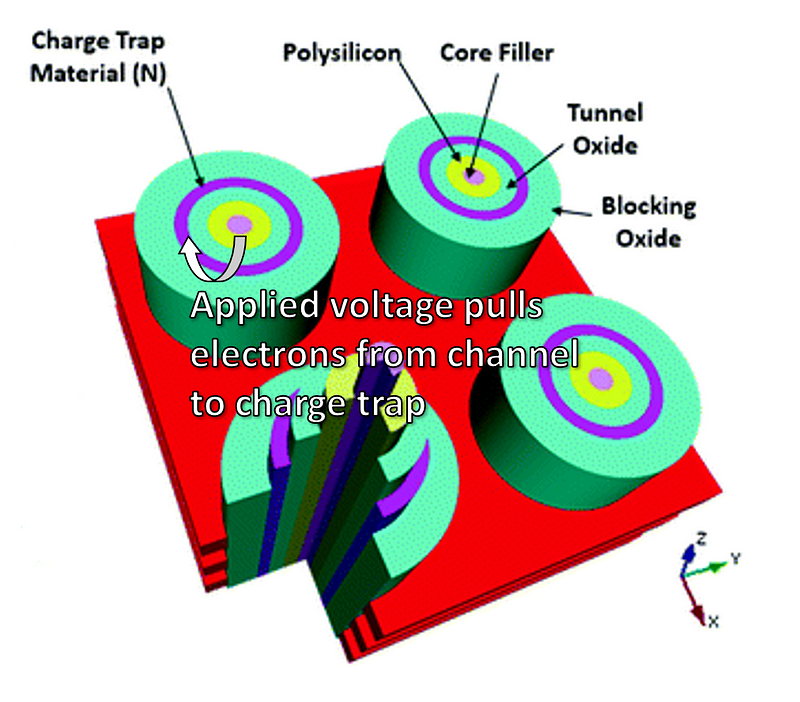The Role of Quantum Tunneling in Solid State Drives Explained
Written on
Understanding Quantum Physics and SSDs
When the term "quantum physics" comes up, many people envision a complex and abstract field of science. It often triggers discussions about consciousness and reality. Nonetheless, experts in the field regard quantum physics as a well-established science. While ongoing research continues to reveal fundamental principles, our understanding has progressed enough to create electronic devices that leverage quantum phenomena.
For instance, when you save a document on your computer, it’s likely stored on a solid-state drive (SSD). These drives are crafted with nanoscale components, enabling engineers to utilize quantum effects that manifest at this tiny scale. Curious about the science that underpins this technology? Keep reading!

Decoding Information in Modern Computing
To grasp how SSDs function, we first need to understand the encoding and storage of information. In contemporary computing, all data is represented as binary bits, essentially a sequence of 0s and 1s.
For example, if you examine an image saved on your device up close, you will notice it consists of an arrangement of pixels. Each pixel's color is defined by a mix of red, green, and blue (RGB) at various intensities. Each of these RGB values ranges from 0 to 255, which can be represented by an 8-bit binary string. When you save this image, your computer's hardware memorizes the sequence of binary numbers in the appropriate order.

How SSDs Retain Data
So, how does an SSD retain this information? An SSD comprises silicon chips filled with densely packed memory cells. Each memory cell functions as a "charge trap flash," where modern SSDs can store up to three bits of data using varying electron charge levels. When you save data, you’re essentially charging these traps with electrons.

The Mechanism of Electron Storage
But how exactly are electrons trapped in these charge traps? The schematic diagram illustrates a charge trap flash. The channel acts as the source of electrons, while the tunnel oxide—a dielectric material—separates the channel from the charge trap. Another dielectric, the barrier oxide, forms a barrier between the charge trap and the gate. These dielectrics create resistance for electrons trying to pass through.
This is where quantum effects play a crucial role. When a voltage is applied to the gate region, an electric field draws electrons from the channel towards the gate. With sufficient voltage, these electrons can quantum tunnel through the tunnel oxide barrier into the charge trap.

Quantum Tunneling Explained
Quantum tunneling is a phenomenon without a "classical" equivalent—it doesn’t occur in daily life, making it seem counterintuitive. To illustrate this, think of trying to push a rock over a hill. If your force isn't strong enough, the rock won't roll over; it needs enough kinetic energy to surpass the potential energy barrier.
On a nanoscale level, however, different rules apply due to quantum physics. Even if the rock lacks the energy to climb the hill, there exists a small probability that it might "tunnel" through the barrier. This tunneling probability relies on factors like the particle's energy, the barrier's height, and its width.
When you write data to an SSD, you utilize quantum tunneling to fill the charge traps in the memory cells. The electrons remain stored there until a process is initiated to extract them.

Engineering Challenges in Quantum Tunneling
Since quantum tunneling is influenced by barrier width, precise engineering of these structures is crucial. If the dielectric walls are too thick, the voltage needed for tunneling can become excessively high, risking damage to the memory cells. Conversely, if the walls are too thin, electrons may escape the traps, resulting in data corruption.
In modern SSDs, the channel is approximately 20 nm, the tunnel oxide measures about 8 nm, the charge trap is around 60 nm, and the barrier oxide is roughly 16 nm thick. This meticulous design allows electrons to remain securely trapped for about ten years of inactivity before data corruption occurs. Furthermore, frequent electron addition and removal can damage the storage cell, capping the number of write and erase cycles. This is why it’s always advisable to back up important files in multiple locations.
The first video explores "Quantum Tunneling and Technology: From Flash Memory to Satellite TV and Appliances," diving into how quantum effects are integral to modern technology.
The second video, "The Engineering Puzzle of Storing Trillions of Bits in your Smartphone / SSD using Quantum Mechanics," discusses the intricate engineering behind data storage using quantum mechanics.
Conclusion
Understanding how quantum tunneling operates within solid-state drives not only clarifies their functionality but also highlights the marvel of modern engineering that enables data storage and retrieval at unprecedented speeds.
Interested in delving deeper? Check out these related articles:
- What Is Nanotechnology and Where Is the Field Today?
- 3 Ways Scientists Can Unlock New Technologies by Working at the Nanoscale.
- Want to Make Contact with Aliens? Here’s How to Do It, According to Science.